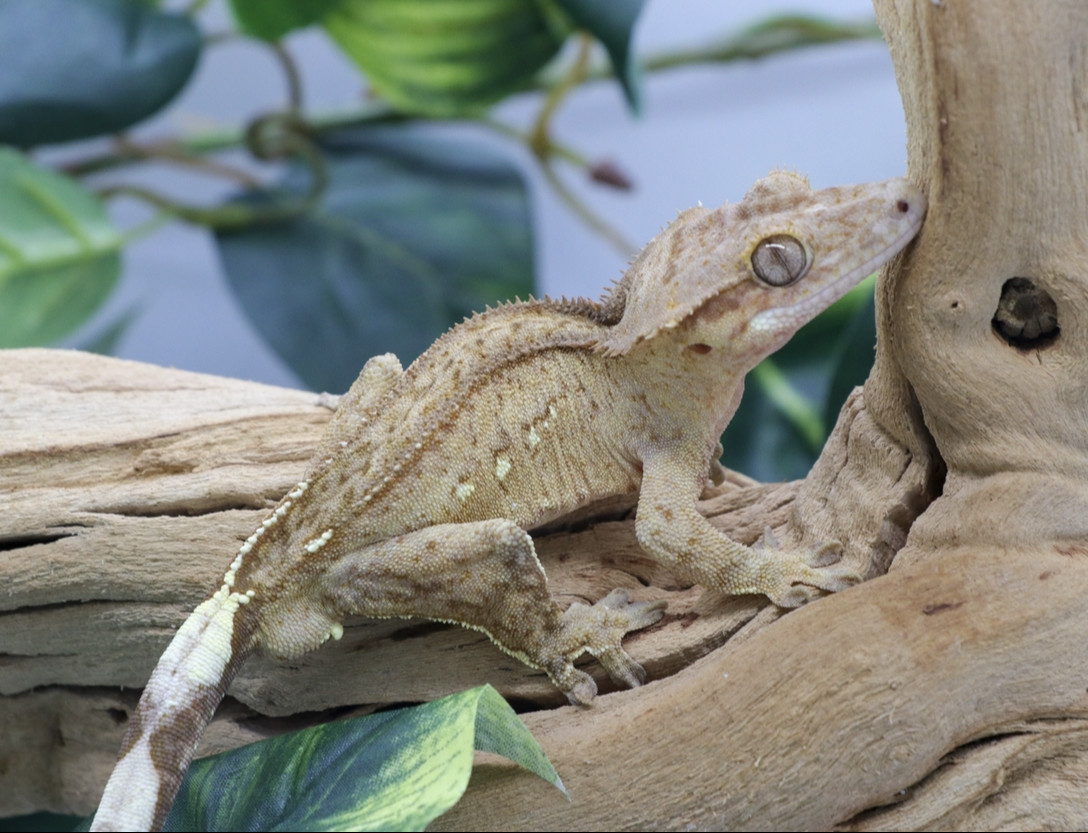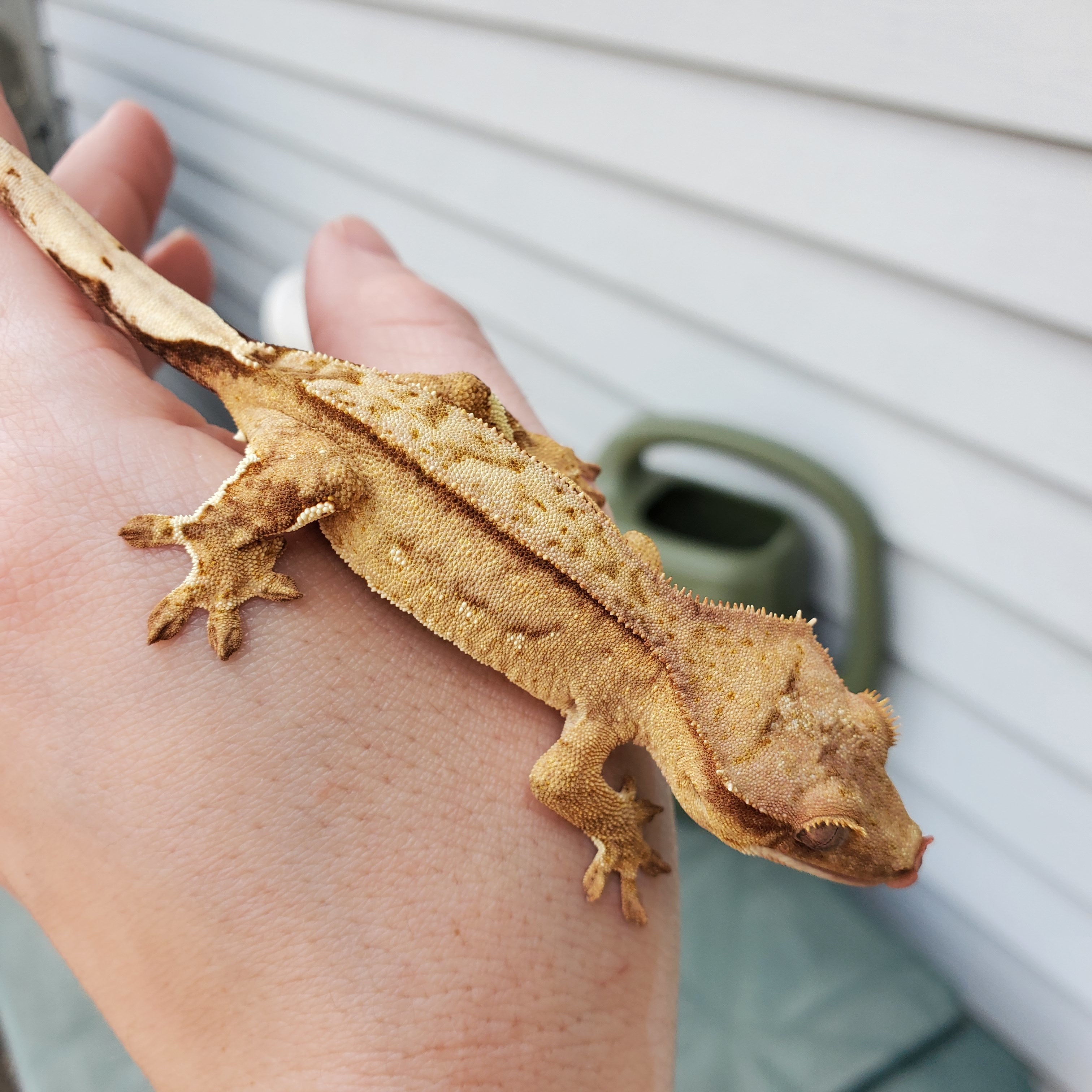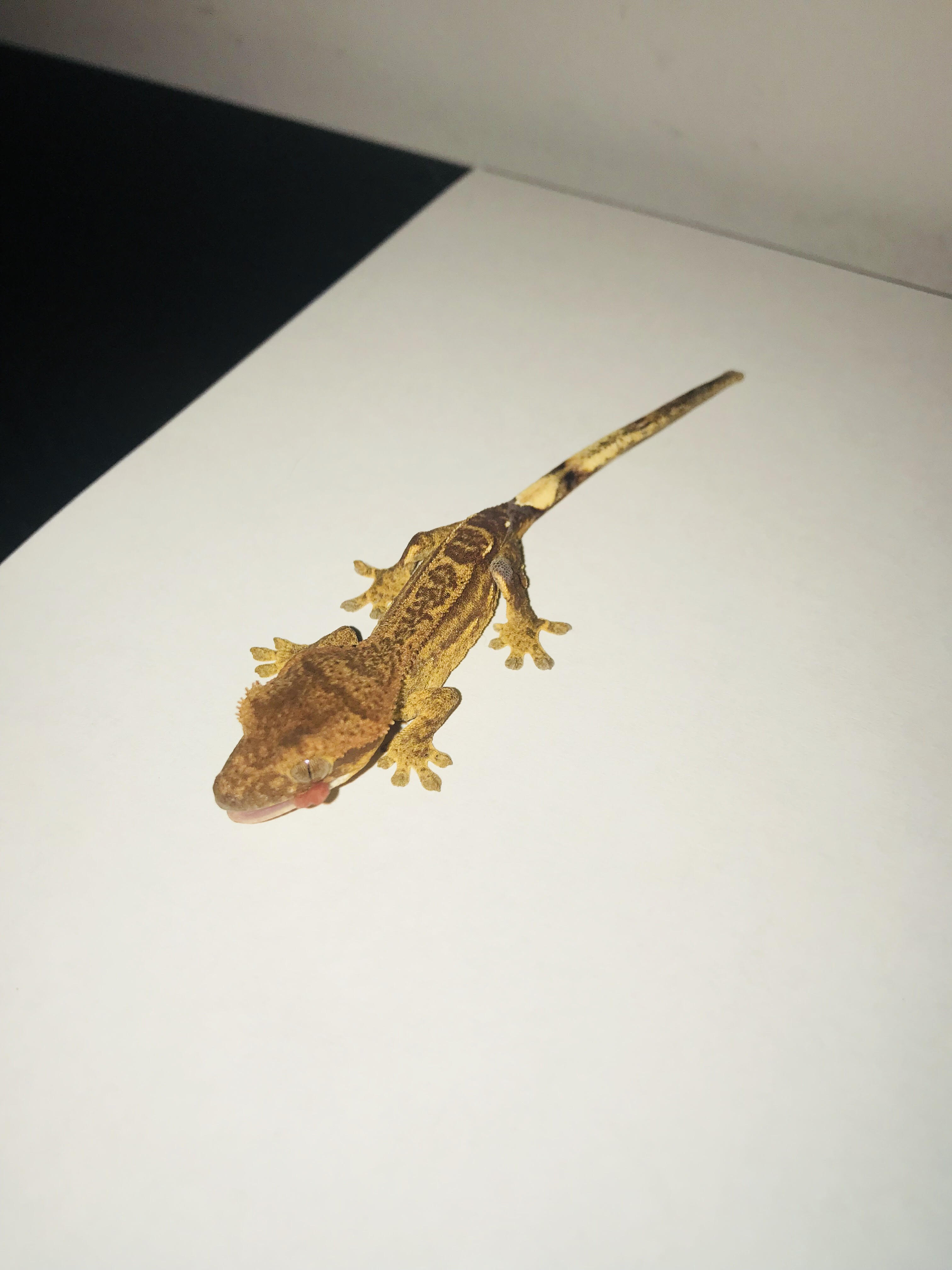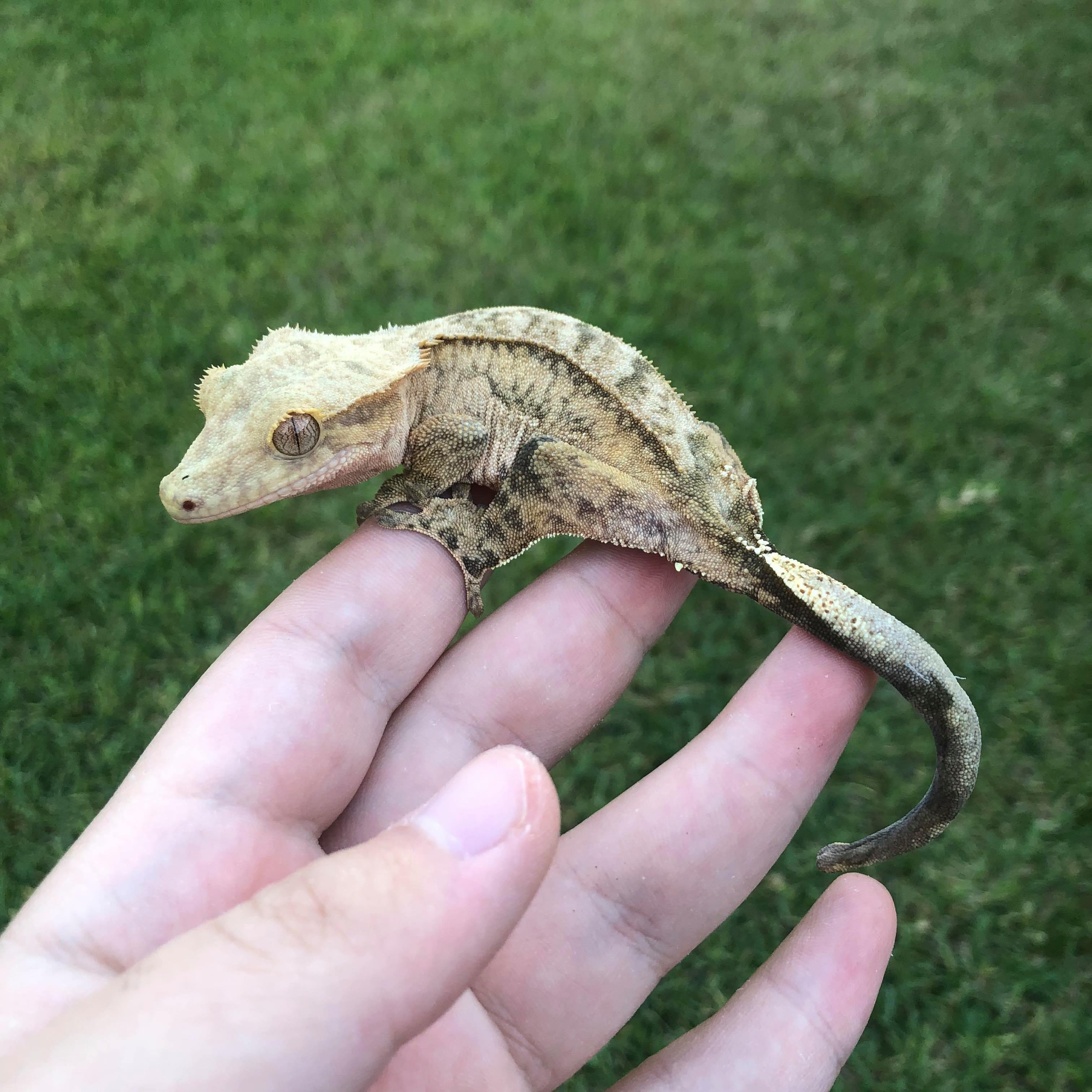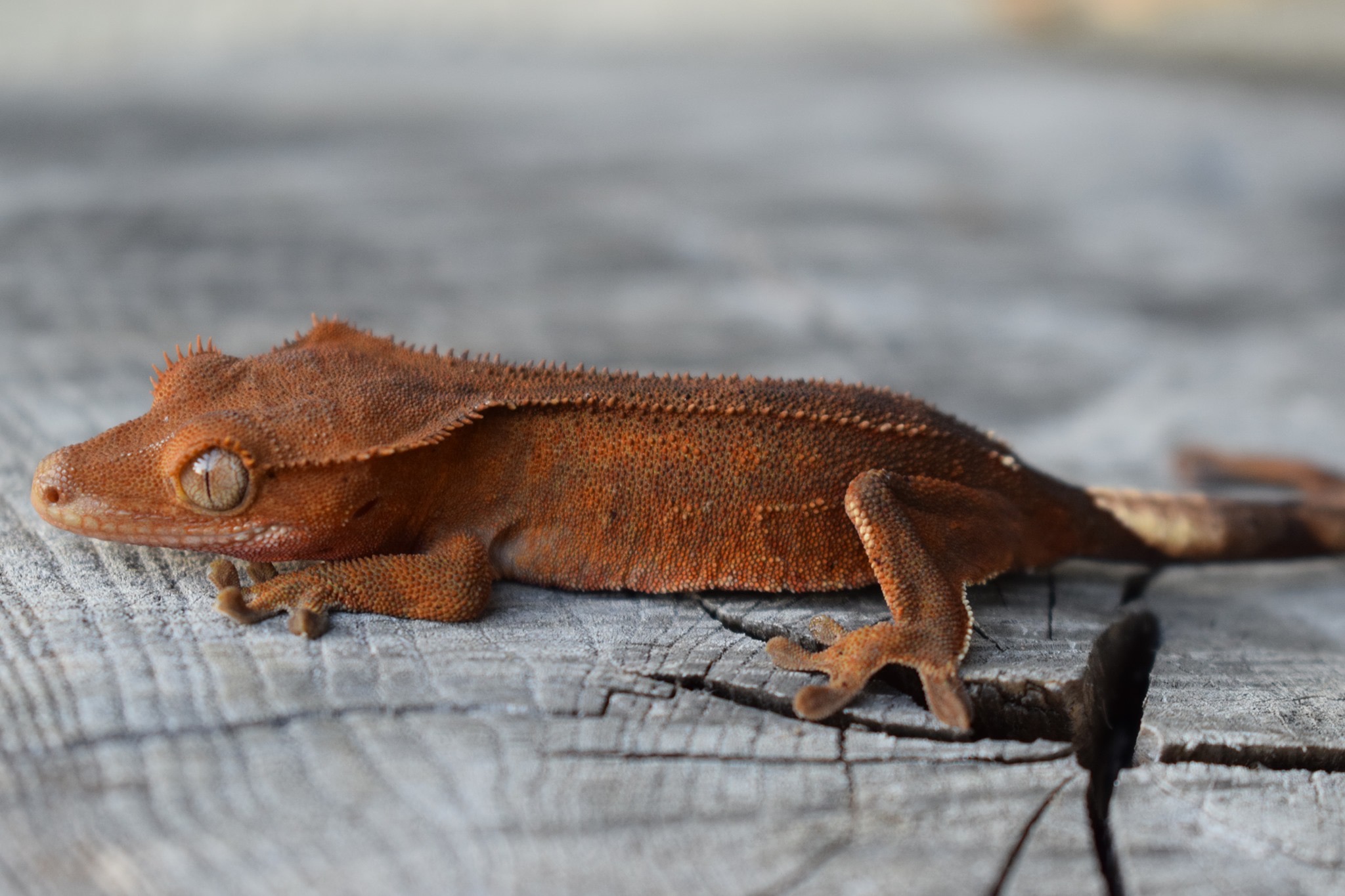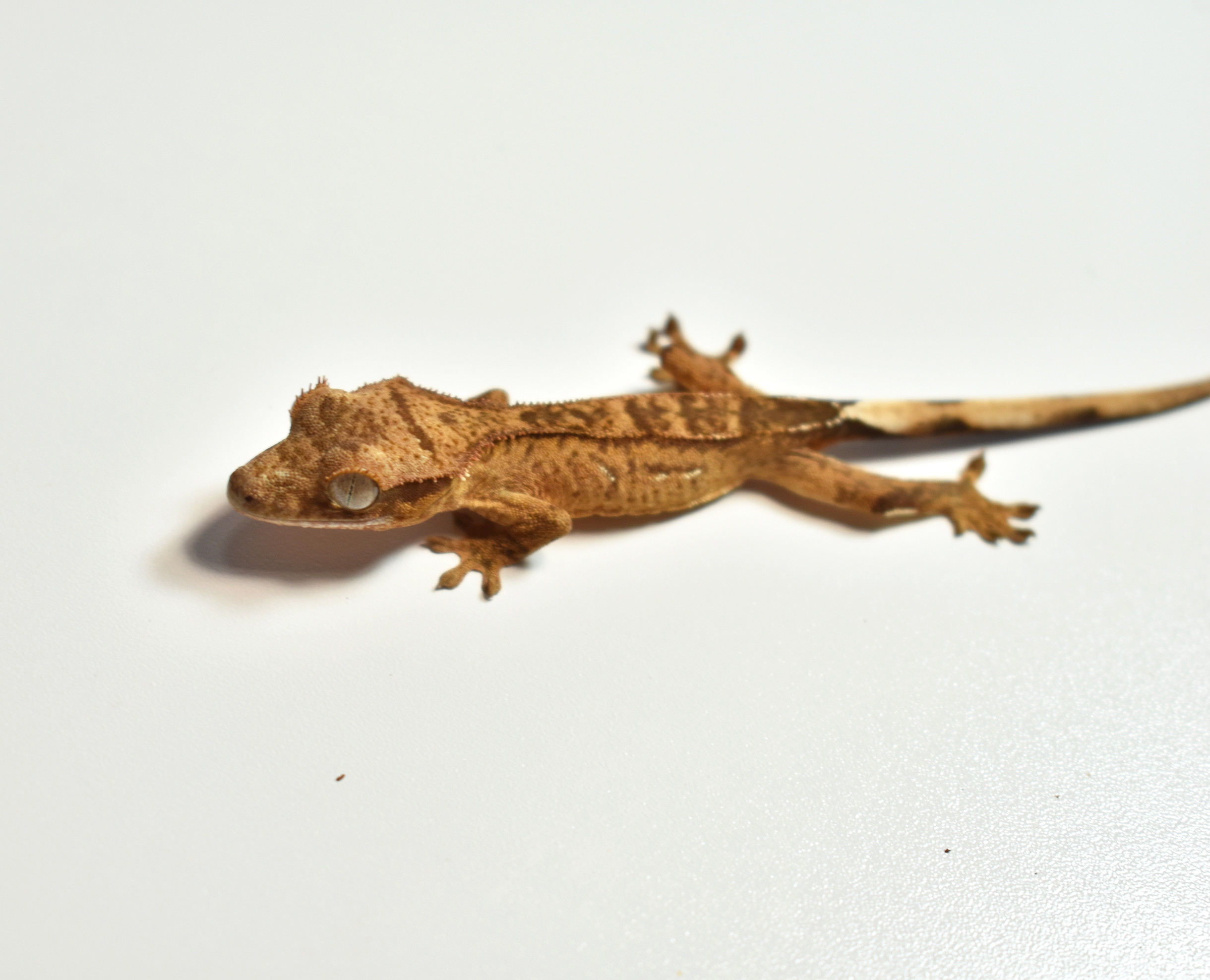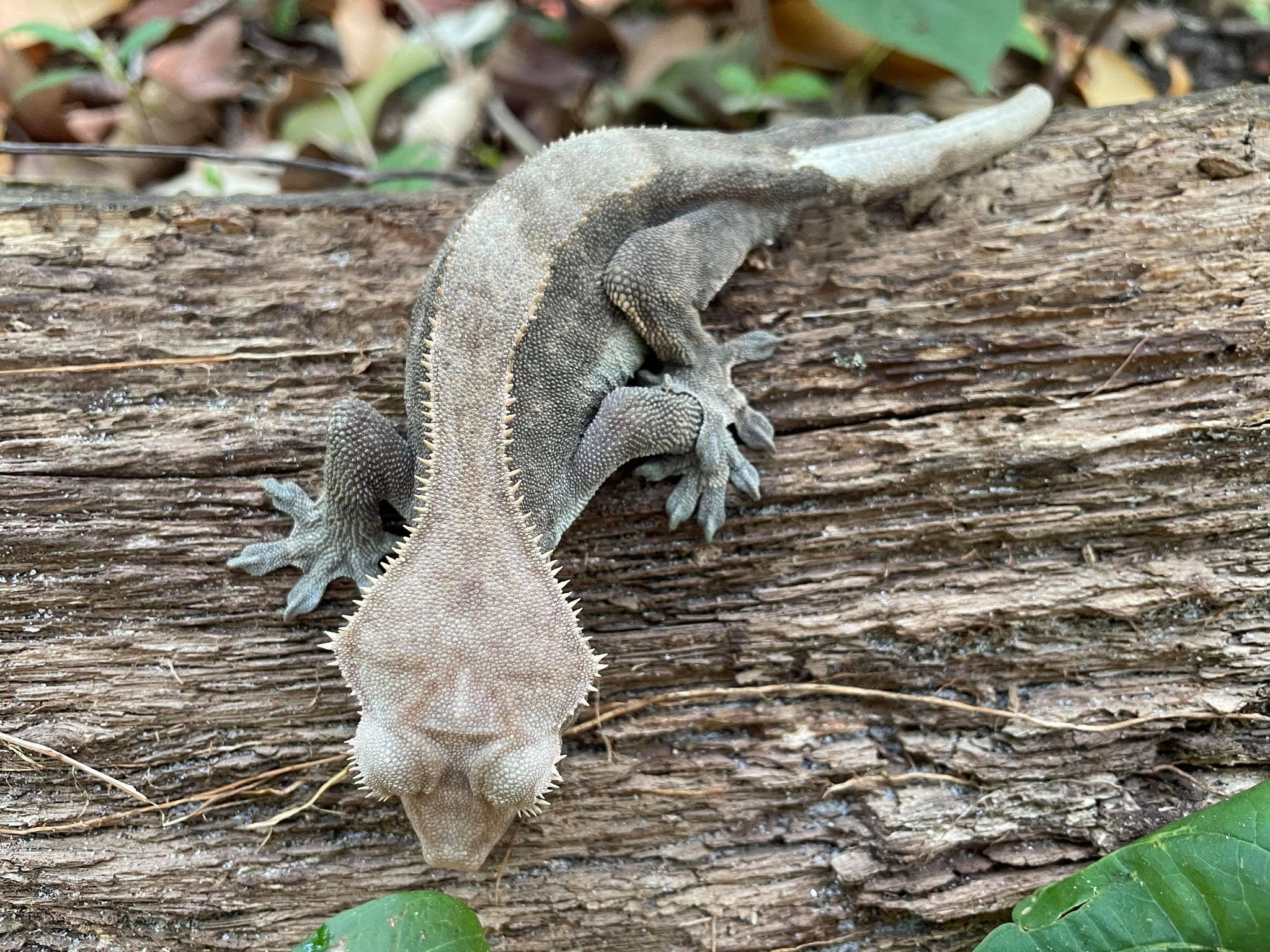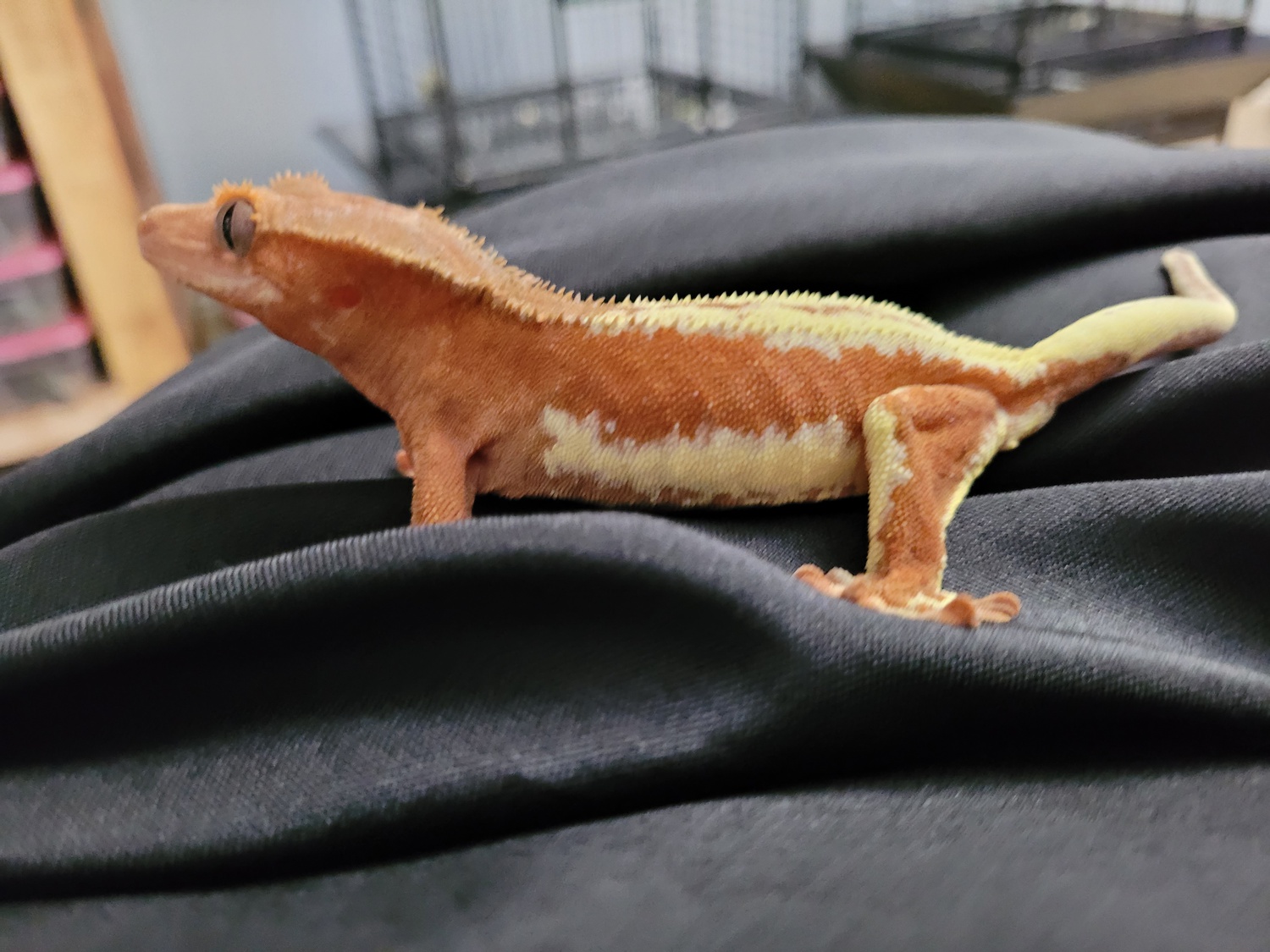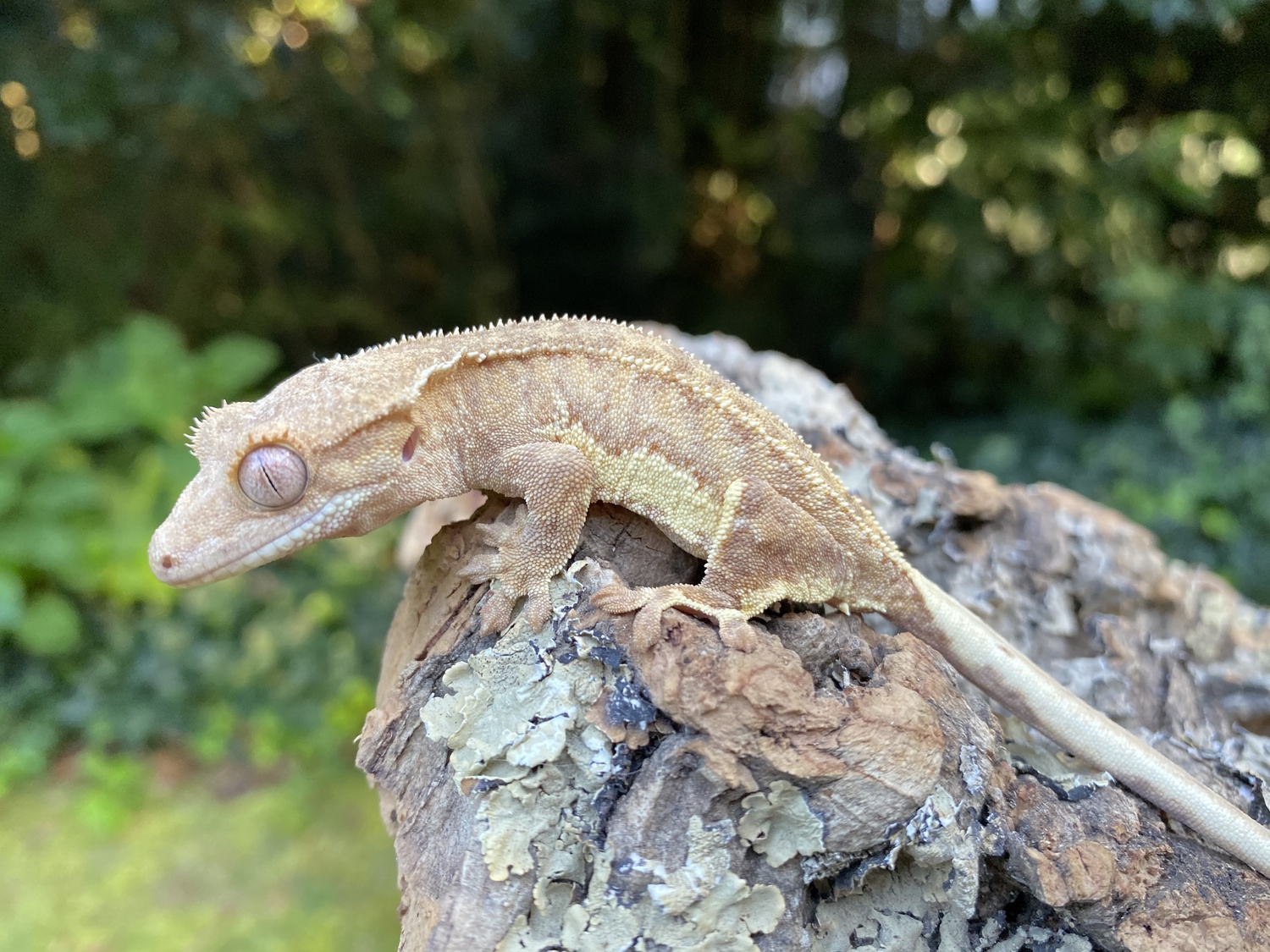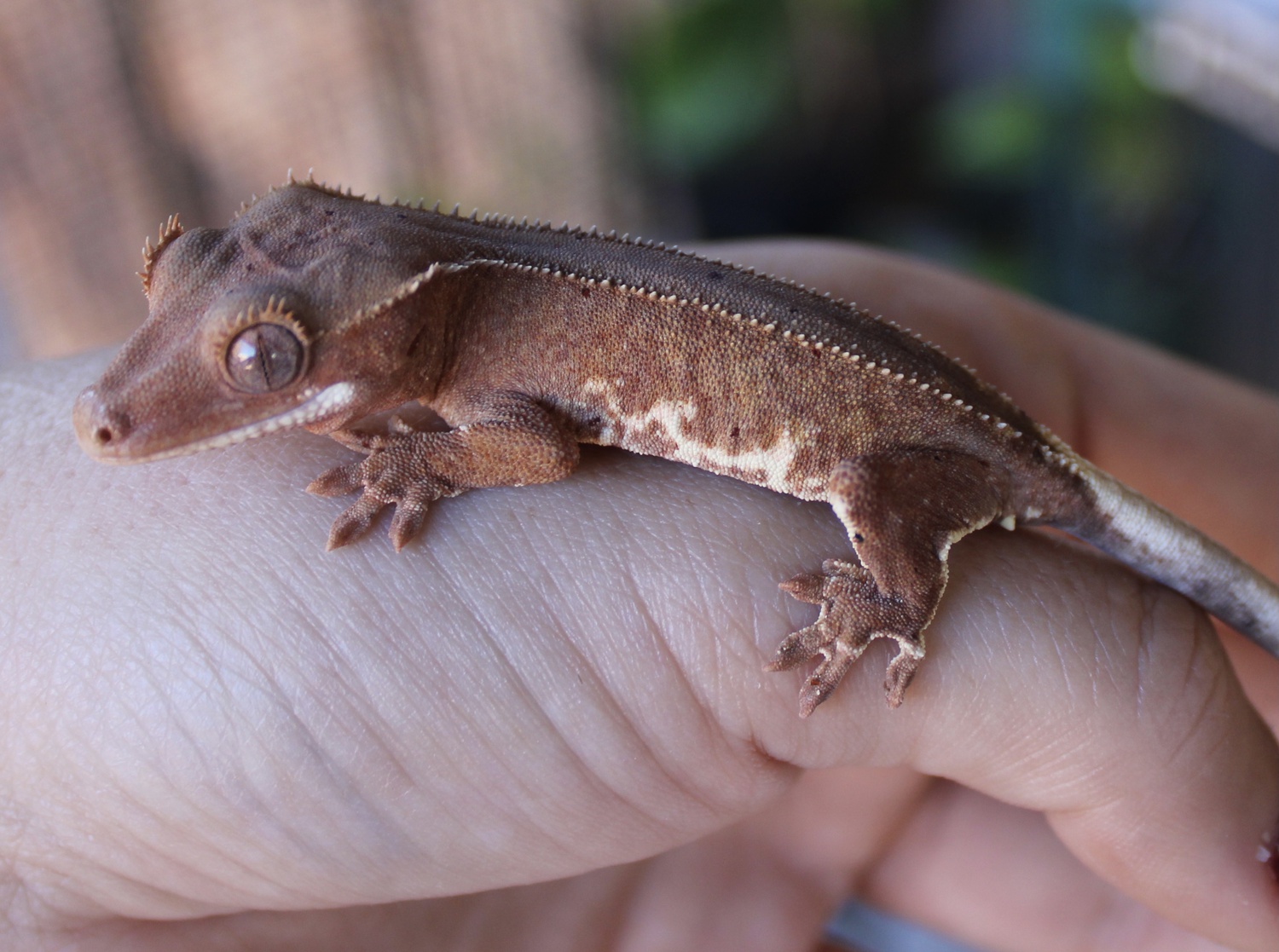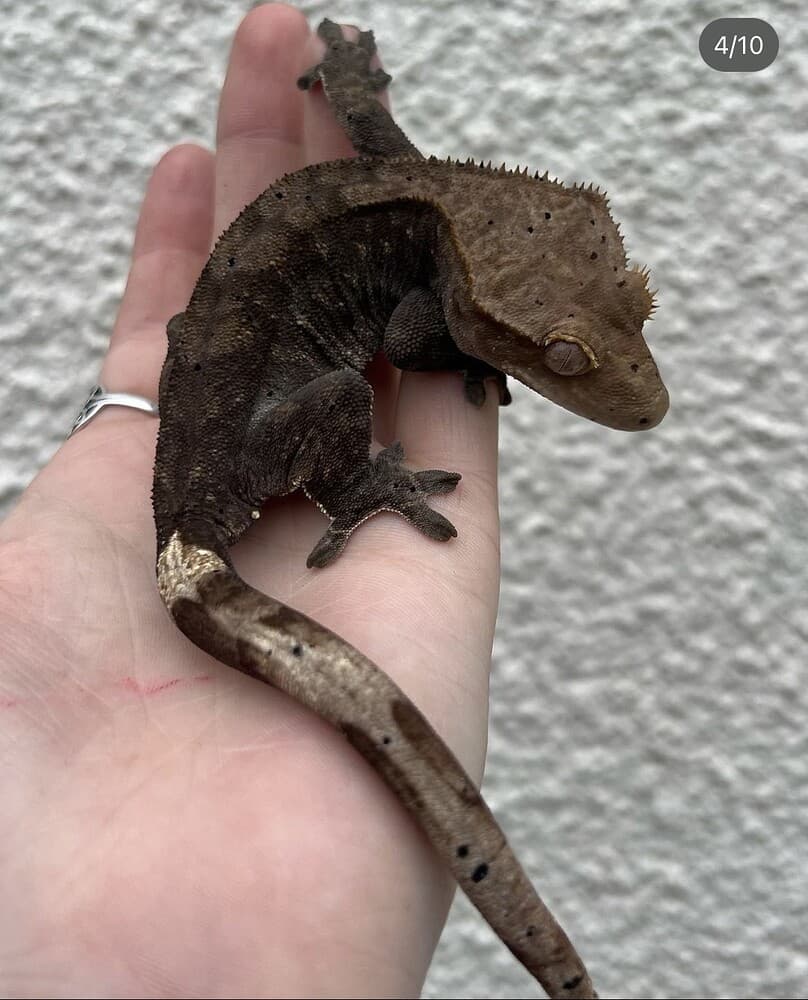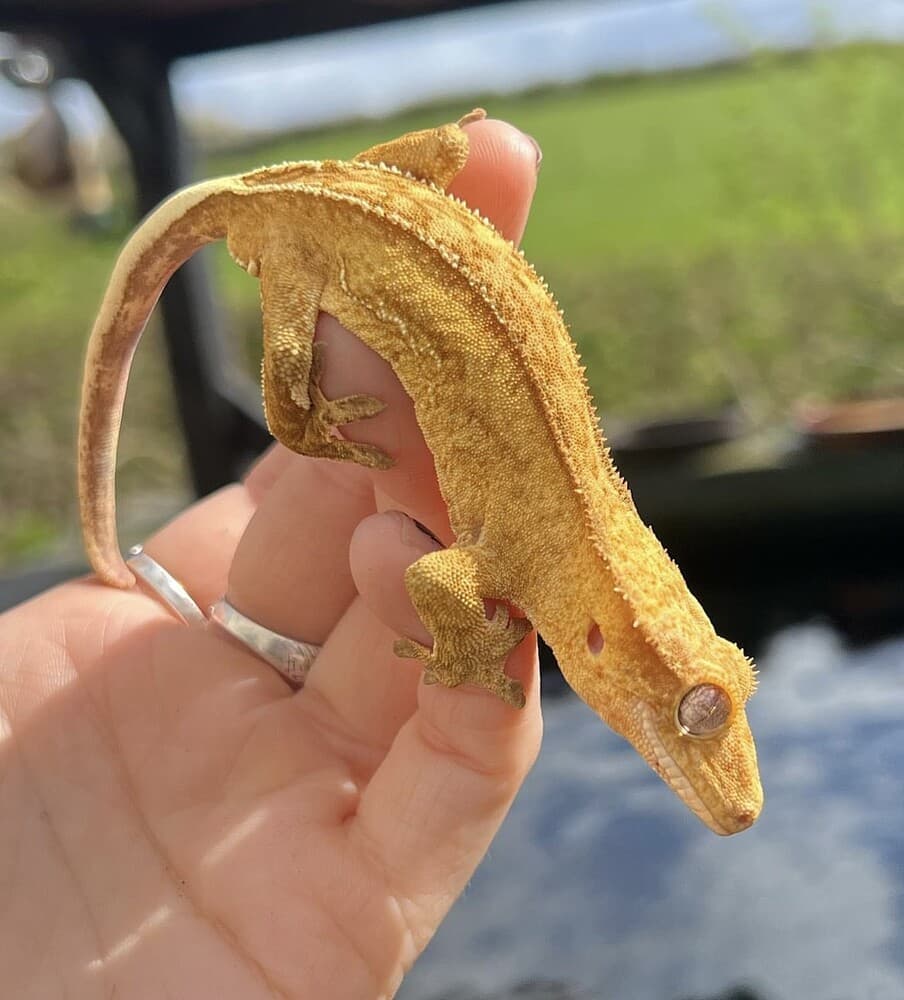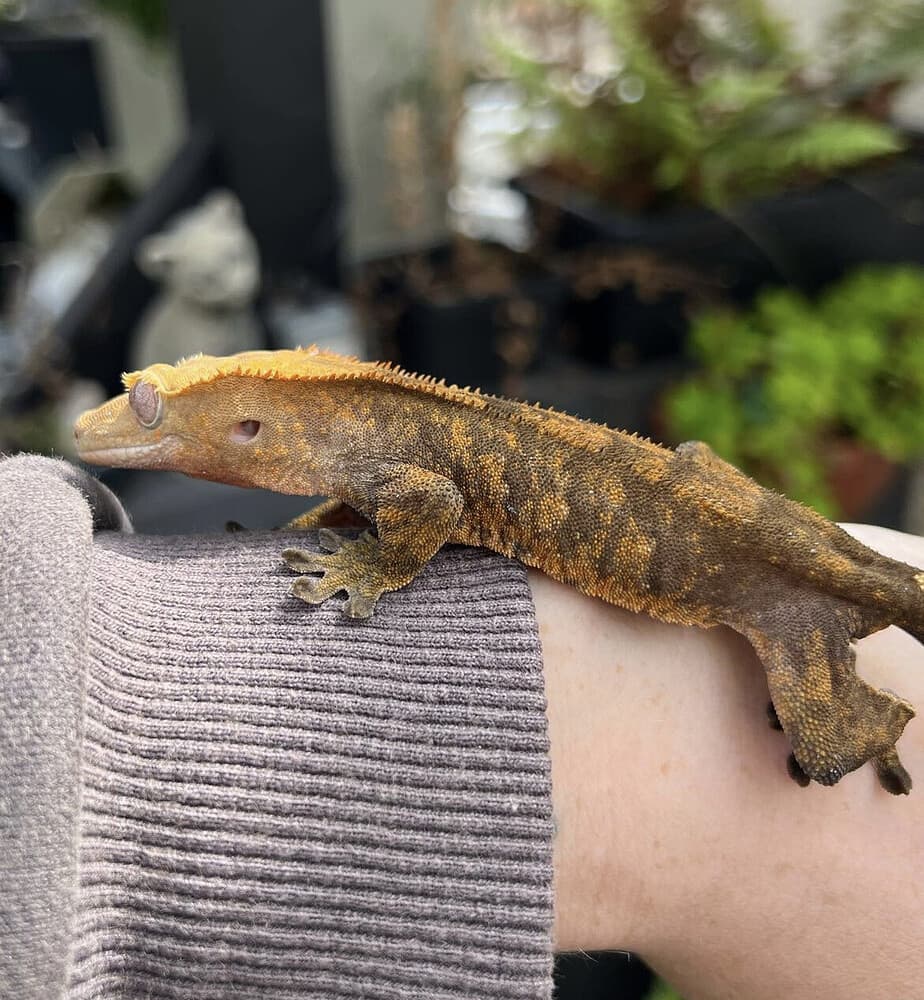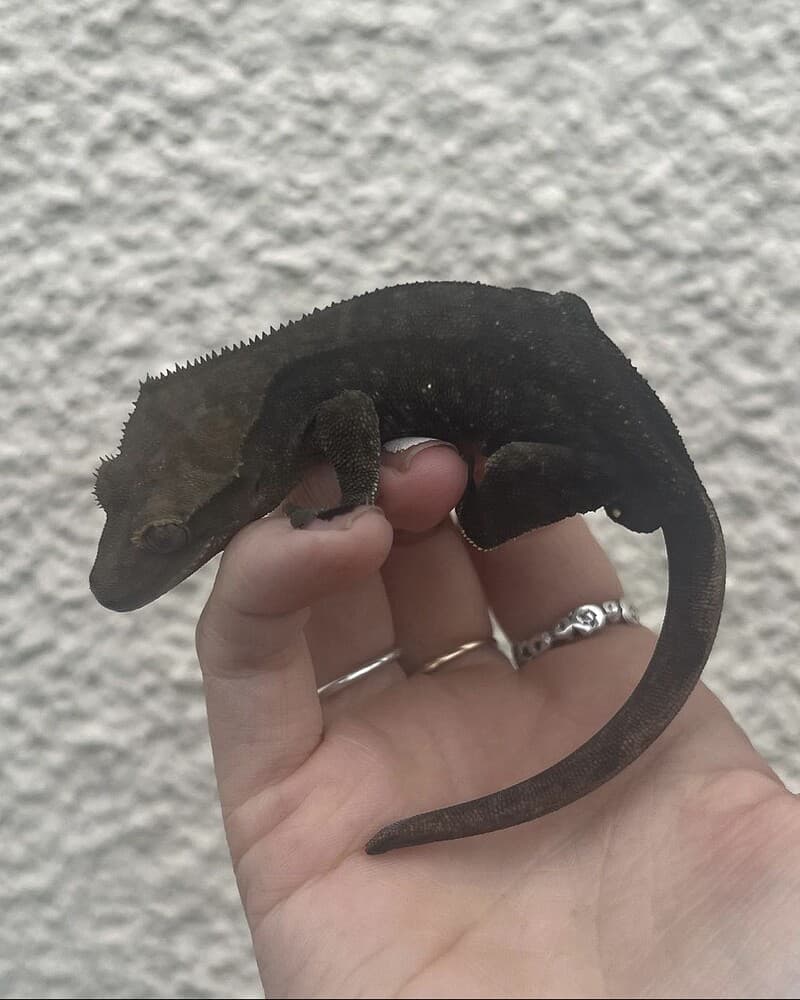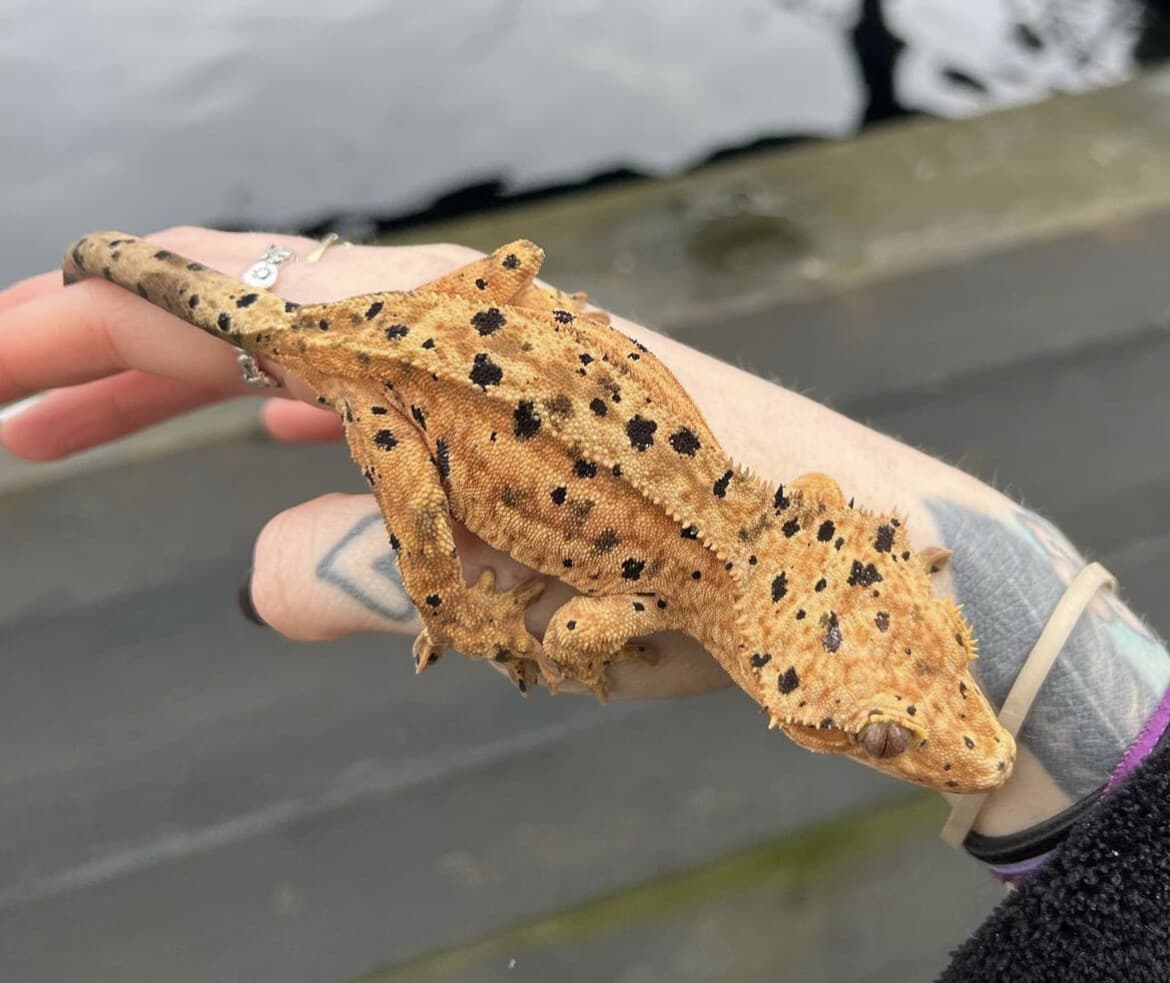Phantom
Type: Recessive
Aliases: Phantom Pinstripe
Issues: N/A
First Produced In: Unknown
Availability: Common
Last Updated: 2023-04-23
Do you have any suggestions or corrections for this article?
Click here to contribute feedback
About
A Phantom Pinstripe will usually have muted colours on the dorsal and lateral area as well as a darker row of scales where a pinstripe would be. Phantom Pinstripe can be full, partial, or dashed and are often seen on geckos with the reverse trait.
There are some clues, when looking at a crested gecko, to determine if it carries the Phantom trait. The simplest clues come from understanding other terms we use (see rule 1), which are descriptors, rather than actual traits.
RULE 1:
Bi-color and patternless animals have the Phantom trait. Therefore, any bi-color or patternless animals are Phantom.
RULE 2:
If a yellow-based animal has melanin blended in it, making it buckskin, cream or tan, it has Phantom. A clean yellow base is Hypomelanistic and does not blend with a Black Base. If it appears blended it has to come from another melanin-producing trait. That trait is Phantom.
RULE 3:
If you are looking at a Pinstripe, with some White Pattern on the raised scalation, the White pattern will fade to base color as it goes from the base of the tail to the head when Phantom is present. The White Pattern loses its dominance to Phantom.
Rule 4:
When you see a Pinstriped animal that has lower lateral pattern, but no upper lateral pattern, yet has Tiger pattern and a darker color in the center of the dorsum, rather than a high white, it is a lower dominance Phantom. A higher dominance Pinstripe is showing it’s strength in this case. The Pinstripe has partially overcome rule 3 to a good degree, but the largest portion of the head will still remain darker. The hobby has stacked Pinstripe for many generations, so this phenotype is a product of long-term breeding practices.
Appearance
Head
The head patterning is unaffected by this trait
Body
Phantom adds a significant amount of melanin which darkens the xanthophores and reduces the white coloration. The areas that Phantom loses dominance is by the base of the tail. You can see this with Lillies and pinstripes with white pattern. The other area is fringe and laterals where Portholes and Walls are found.
This trait suppresses pattern color from the flame or harlequin gene. Although a faint pattern can sometimes still be observed as it doesn’t completely mute all coloration. The trait also seems to increase melanin. Selective breeding of this gene revealed that you can control the hue of melanin, from a pitch black to a milk chocolate color. The trait is very powerful and creates the majority of “oddball” and unexplained animals in the hobby due to being recessive. There are several examples of animals producing phantoms but not showing an apparent indication that the animal is Het for phantom . When we look at how phantom affects the chromatophore we can see that it has less of an effect on pure white coloration coming from white pin or white laterals and it loses its dominance towards the base of the tail.
Belly
The belly patterning is unaffected by this trait.
Tail
The tail patterning is unaffected by this trait
Controversy
This trait is often referred to as “Phantom Pin,” however Phantom is NOT related to Pinstripe. They are often bred together as a combo though, so this is where the interpretation comes from for them being related.
Phantom has a range of dominance. Sometimes we mention them being heterozygous or homozygous as it is recessive. Heterozygous animals can potentially show indicators that we feel are Het for the trait and homozygous animals have different expression levels within the hobby due to other traits that are present. This teaching method helps hobbyists take the first step in understanding that Phantom can present itself in more than one way. We can now refer to the upper level of expression as more dominant, and the lower level as less dominant, when describing the Phantom trait in crested geckos.
The greatest issue, in defining Phantom, is the difference of opinion based on human descriptors. These descriptors have broken a single trait into multiple named phenotypes. These phenotypes have been misleading the hobby into thinking they are separate traits. The highly polymorphic nature of crested geckos lends itself to alternative phenotypes or forms. Finding the connections takes some due diligence.
Phantom acts recessively and falls under non-Mendelian genetics. Thinking it is Mendelian has caused some hobbyists to take our presented information out of context. Spreading this, and other false or limited/corrupt data lends itself to dividing us from one another. It also skews theories that end up off-base and biased. With Phantom, many animals are not tracked properly. It can be from not identifying Phantom properly and/or using simple general lineage that is not your own or not properly founded. When we use lineage from geckos that are from other breeders, or from our geckos bred to other breeder’s animals, it is not reliable until the animals are test bred and genetically proven for specific heritable traits. This can take several generations provided you actually understand the traits.
Proven Lines
No known proven lines
